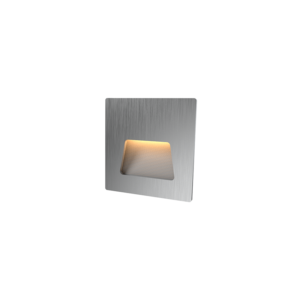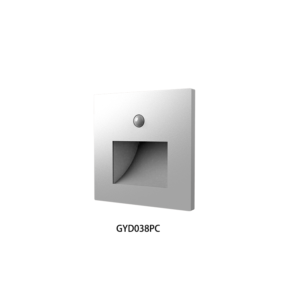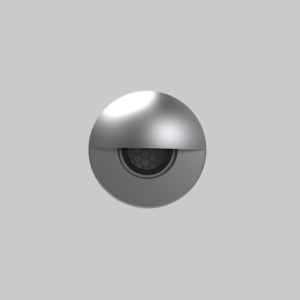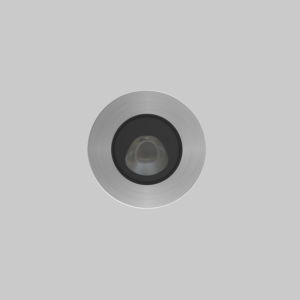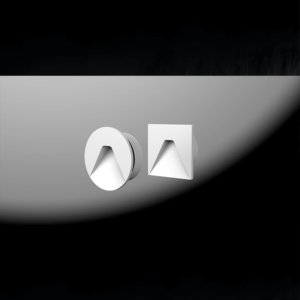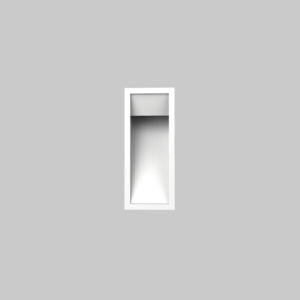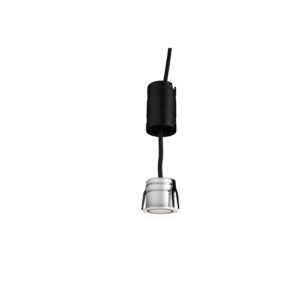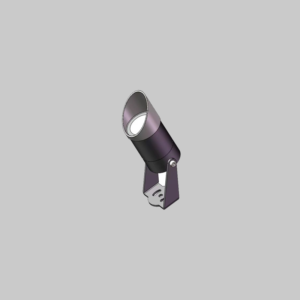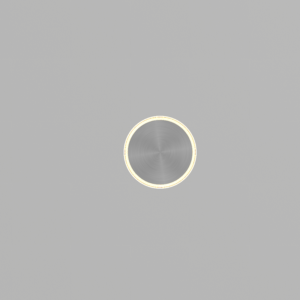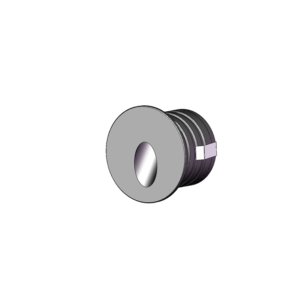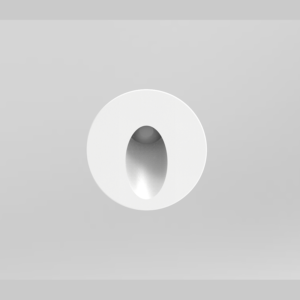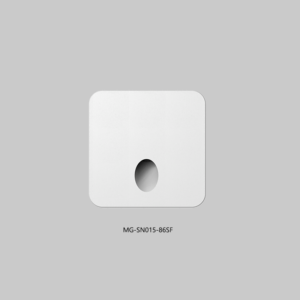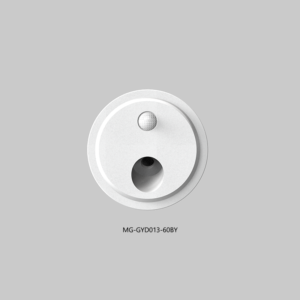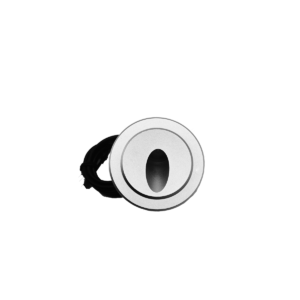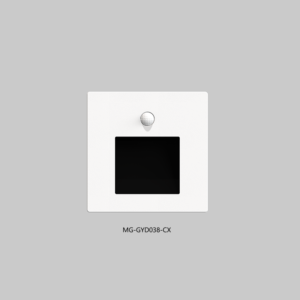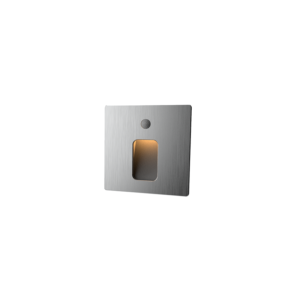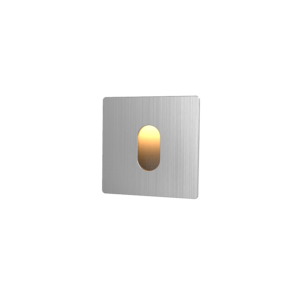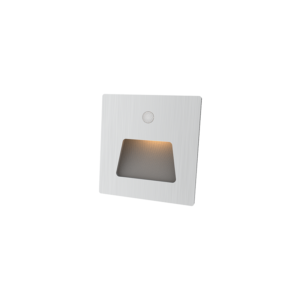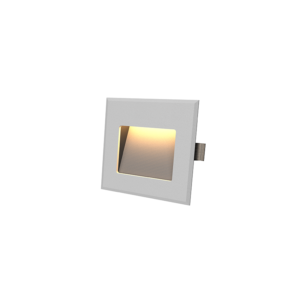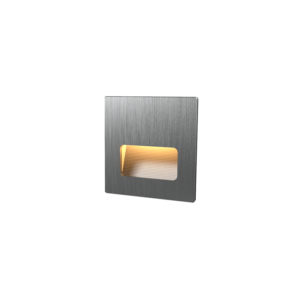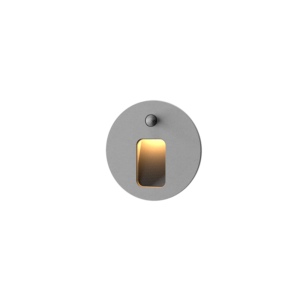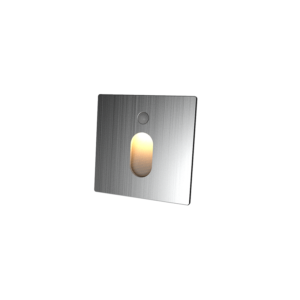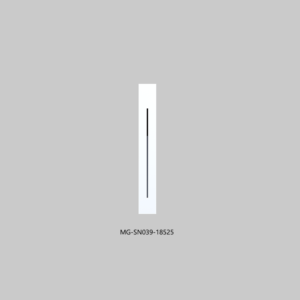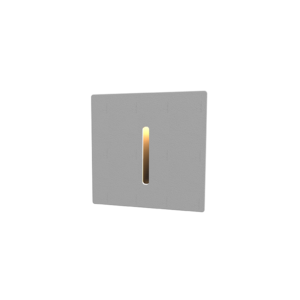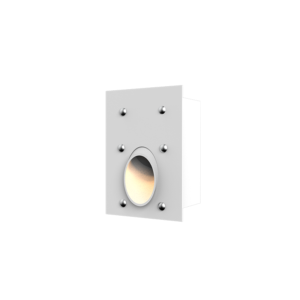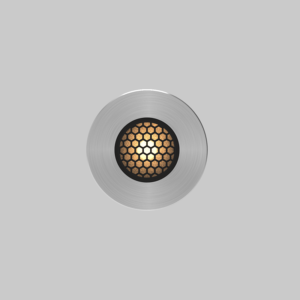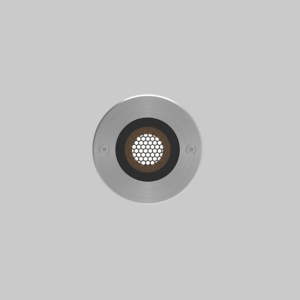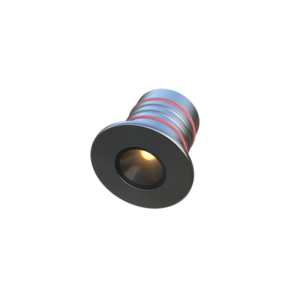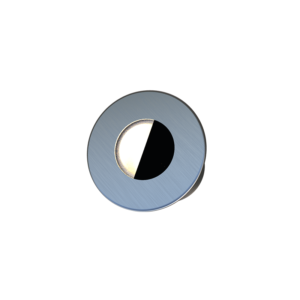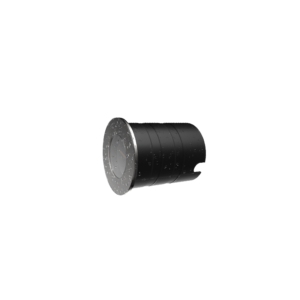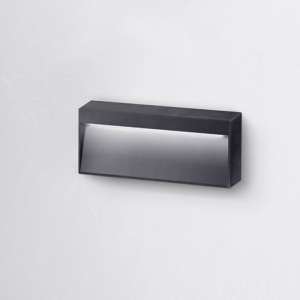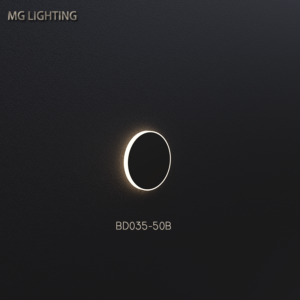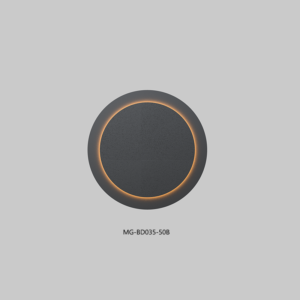In interior design, lighting design is a key link in shaping the atmosphere of space and enhancing practicality. And the staircase as a vertical transportation hub connecting different floors, its lighting design is not to be ignored. Excellent staircase lighting design can not only meet the lighting needs, but also enhance the sense of space, play a guiding role, while realizing the aesthetic effect of “see light, not see light”. Next, let us delve into the various aspects of staircase lighting design.

Types of Stair Lighting
1. Tread Lighting
Tread lighting is mainly used to meet the basic lighting needs of people walking. It illuminates each step clearly and avoids safety issues such as stepping over due to insufficient light. Tread lights are usually installed at the front or side of the tread, through clever hidden design, while providing lighting, to maintain the overall appearance of the staircase simple and beautiful.
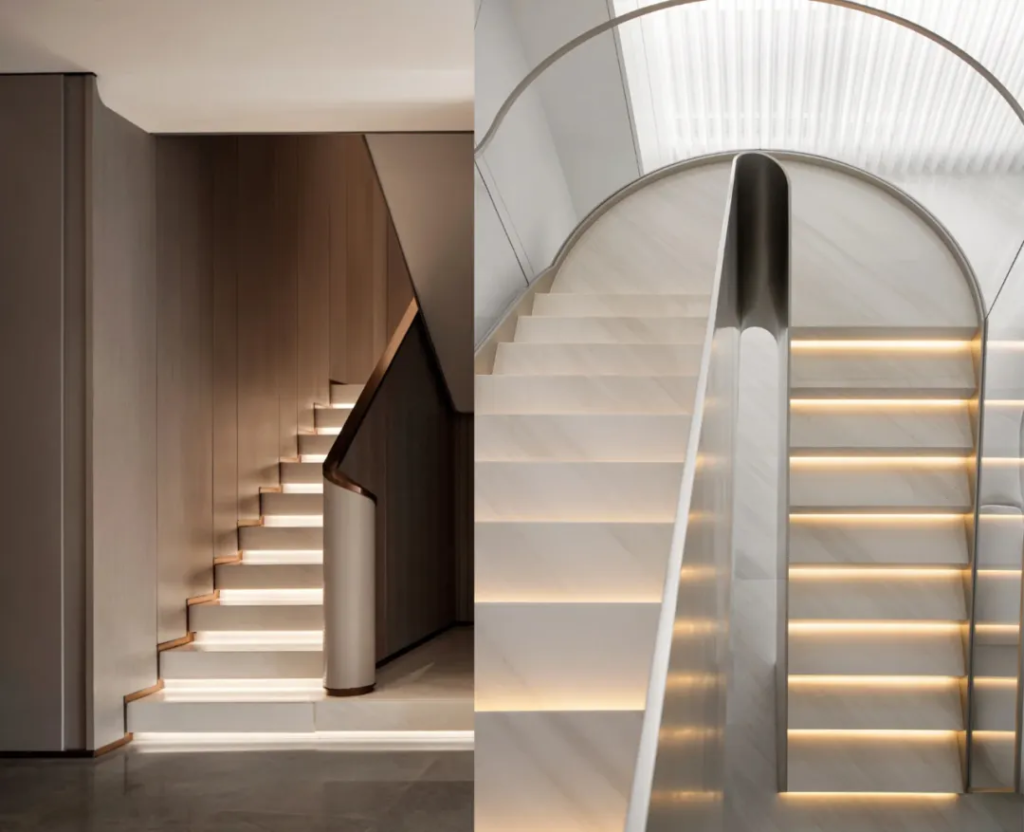
2. Handrail Light
Handrail lighting not only has a certain lighting function, but also has a strong directional guidance. Lights installed along the handrail can visually form a continuous light band to guide people up and down the stairs. This lighting design is not only practical, but also adds a unique decorative effect to the staircase, making the staircase become the visual focus of the space.

3. Staircase Border Lighting
Staircase edge lighting also has a dual role of lighting and directional guidance. It is set along the edge of the staircase, outlining the outline of the staircase, so that the staircase can be clearly recognized in the dark. With the handrail light, it can further strengthen the lines of the staircase and enhance the three-dimensional sense of space.

4. Step Light
Staircase StepFights are a kind of specialized installation in the staircase parts, used for auxiliary lighting lamps. It is usually installed in the staircase on the tread, the side of the tread or against the wall position, the height is generally 15 – 30cm from the ground, according to individual habits can be adjusted.
The role of staircase Steplights is very significant. From a safety point of view, it can illuminate the staircase steps when the light is dark, effectively avoiding people stepping on the stairs, reducing the occurrence of fall accidents, and guaranteeing the safety of passage at night or when the light is insufficient. In terms of decoration, its simple and compact appearance can be integrated with the overall decorative style of the stairs, does not take up too much space, but also creates a warm, comfortable atmosphere, to enhance the aesthetic sense of space and sense of hierarchy. In addition, many staircase Steplights have a sensor function, automatically light up when people are close, and automatically go out after leaving, which is both convenient and energy-saving.

Staircase Lighting Design Form
1. Seeing Light but Not Seeing Light
This is an important goal of modern staircase lighting design. By hiding the lamps in the tread, handrail or inside the staircase structure, using the principles of reflection and refraction, the light is evenly and softly emitted, avoiding the glare generated by the direct exposure of the lamps and creating a simple, elegant and hierarchical light environment.
2. Enhance the Sense of Spatial Hierarchy
Reasonable arrangement of different types of staircase lighting can form multiple lighting levels in the vertical direction. Tread lighting illuminates the surface of the steps, handrail lighting and staircase edge lighting outlines the outline of the staircase, different brightness and position of the light intertwined with each other, enriching the visual effect of the space, so that the staircase where the space has a more three-dimensional sense and sense of depth.
3. Create a Sense of Atmosphere
According to different spatial styles and scenarios, choose the appropriate light color, brightness and irradiation angle, can create a variety of unique atmosphere. Warm yellow light can create a warm and comfortable atmosphere, suitable for home space; while cold white light can create a simple and modern, rich sense of technology atmosphere, commonly used in commercial or office space staircase design.
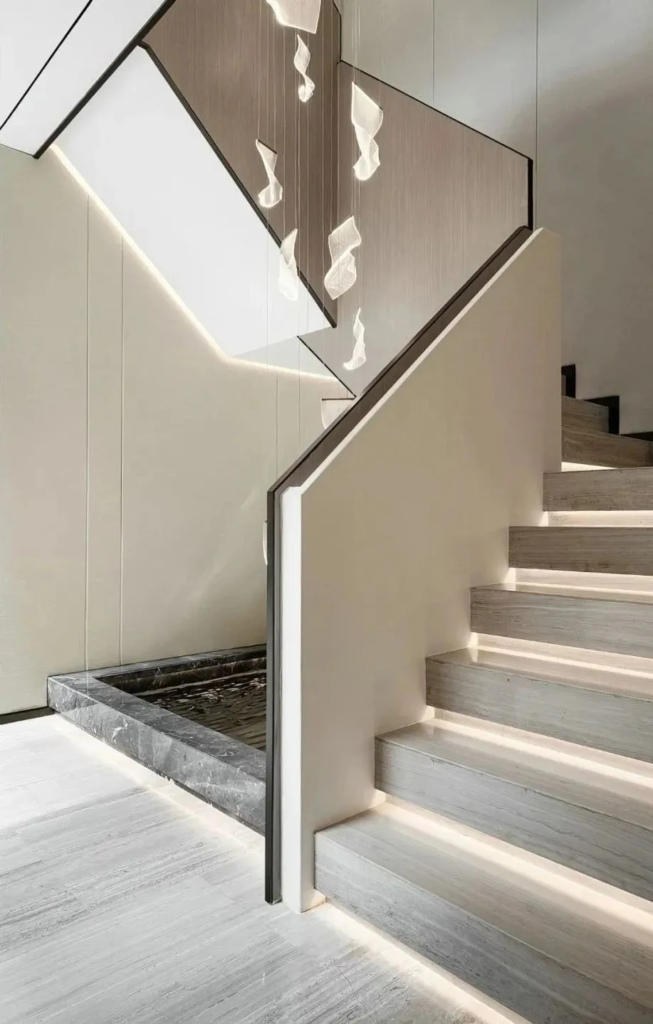
Construction Process of Staircase Lighting
Pre-preparation
Before the construction, you need to reserve 220v wires on one side of the wall to provide power for the subsequent installation of lamps and lanterns. At the same time, according to the material, structure and design of the staircase, to determine the location and mode of installation of lamps and lanterns, and prepare the corresponding construction tools and materials.
1. Stone Tread Light Construction
01. Grass-roots Treatment
Be sure to ensure that the grass-roots level of the staircase is solid and stable and flat, allowable error is strictly controlled within 3 mm. If the grass-roots level is not flat, you need to use cement mortar for leveling operations, in order to create a good foundation for subsequent construction.
In the pre-construction period, the direction of the wires should be carefully planned, according to the design requirements of the power supply wiring position accurately reserved for the subsequent installation of the light strip to provide convenience. It is important to reserve the size of the light slot. The depth should be 30 – 35mm, the height should be 50 – 60mm, too narrow will bring difficulties to the installation of lamps and lanterns, too large is easy to trip, affecting the use of safety and aesthetics
.

02. Strip Installation
Adopt the way of fixing the light strip with the card slot. First of all, the metal card slot firmly fixed in the side or bottom of the tread plate, the installation process need to use a level and other tools to ensure that the card slot is in a horizontal state and straight, deviation control within a very small range.
After the slot is fixed, the light strip will be carefully stuck into the slot, and special attention should be paid to the connection of positive and negative poles of the light strip to ensure that the connection is correct. After the completion of the installation of the light strip, you need to immediately carry out a power test to check whether the light strip is normally lit, if any problems in a timely manner to investigate and adjust.

03. Installation of the Stone Stepping Plate
Apply structural adhesive evenly on the back of the stone stepping plate, especially on the edge parts which are in contact with the light strip, more structural adhesive should be applied appropriately to enhance the bonding effect.

Apply the structural adhesive of the stone stepping plate accurately placed in the predetermined position, and press hard to make it close to the grass-roots level. After the placement is completed, use the level meter again to check the flatness of the stepping plate to ensure that it meets the construction standards.
After the initial curing of the structural adhesive, the sealant will be carefully applied to the gaps and joints between the tread plates to make the overall appearance of the staircase more exquisite and beautiful through the filling of the sealant, and at the same time play a role in waterproofing and dustproofing.
04. Wiring and Commissioning
Connect the wires of the light strip to the power supply safely and securely, and strictly follow the electrical installation specifications in the wiring process to ensure that the wires are firmly connected and well insulated to prevent leakage and other potential safety hazards.
After the wiring is completed, through the controller to debug the lighting effect. According to the actual demand for adjusting the brightness of the light, color (if color-changing light strip), flashing mode, until the lighting effect to achieve satisfaction.

2. Light-emitting Handrail Construction
In the installation of light-emitting handrail, special attention should be paid to the distance between the handrail and the wall as well as the size of the installation off the ground. The appropriate distance can ensure that the handrail is firmly installed, but also to ensure that the lighting effect is not affected. Generally speaking, the distance between the handrail and the wall should be determined according to the actual space and ergonomics, in order to facilitate people’s grip; off the ground installation dimensions usually follow the relevant building codes to ensure the use of comfort and safety.
3. Staircase Side Line Lighting Construction
Due to the heat generated by the long-time use of light strips, it is necessary to reserve sufficient space for heat dissipation during construction. At the same time, it is necessary to choose products that comply with safety standards to ensure that the use of light strips will not cause safety hazards due to overheating and other problems. Ventilation holes or cooling slots can be set up at the location of the installation of the light strip to help heat dissipation.
4. Staircase Steping Light Construction

Pre-construction Preparation
Before the start of utilities construction, in advance of the purchase of inductionSteplights. According to the actual size of the Steplights, pre-planning and slotting in the wall, ready for the subsequent installation of Steplights.
Pre-embedded Utility Construction
Enter the utility construction stage, complete the wire planning, the Steplights bottom box for pre-embedded, to ensure that the bottom box location is accurate, and the overall plumbing and electrical layout coordination.
Staircase Installation Points
If the Steplights are installed in the staircase, they should be installed in the center of the stair treads to ensure that the lighting effect and aesthetics.
Height Determination Method
The installation height of the Steplights is recommended to be between 15 – 30cm, and the specific height can be determined according to individual habits. In the plumbing and electrical positioning link, you can make a comparison on the spot to find the most suitable height for you.
Wall Treatment Measures
After the installation of the Steplights, when the wall batch work, you can take the hanging mesh processing, effectively preventing the wall from cracking.
Staircase Lighting Design Points of Attention
(A) Avoid the Use of Light-collecting Downlights
Collected light type downlight can provide strong centralized lighting in some areas, but there are serious drawbacks when used for staircase lighting. The light emitted by the shadow will be too obvious, making it difficult for people to clearly distinguish the difference between the height of the stairs, increasing the risk of falling when stepping on and off the stairs. Therefore, in the staircase lighting design, should firmly avoid the use of such lamps.

(B) Reasonable Set Steplights Position
As a common way of stair lighting, Steplights need to be paid extra attention to when installing. Whether going up or down, the light source of the Step lamp can not appear directly in people’s line of sight. If the light source is directed into the eyes, it will produce glare, which interferes with vision and affects the accurate judgment of the condition of the stairs. Ideal installation location should be able to effectively illuminate the stair treads, but also cleverly hide the light source, such as set on the side of the tread below or embedded in the front edge of the tread underneath, through clever shading and reflection, so that the light softly emanates.

(C) Carefully Choose the Direction of Wall Lamp Lighting
When choosing to install wall lamps as part of the staircase lighting, pay special attention to the lighting direction. Wall lamps should be avoided upward lighting, because this way will make people down the stairs directly see the light source, the same will produce glare problems, affecting the visual effect and walking safety. Wall sconces are best used in a downward-facing lighting manner, focusing the light on the stair steps to provide clear, glare-free lighting for people going up and down the stairs.

From the subtle layout of the staircase lighting design, it is not difficult to find its popularity with the current design concept of no main light has a different flavor. Staircase lighting design abandons the pattern of a single main light, through the combination of step lights, handrail light source, step light source and Steping light source and other auxiliary lamps and lanterns, to achieve the integration of functionality and aesthetics.

No main light design is also the same, it breaks the limitations of the traditional main light, the use of downlights, spotlights, light strips, floor lamps and other lamps, according to the functional needs of different spaces and atmosphere creation, flexible matching and layout. This design not only creates a richer, layered light effect, but also enhances the overall style of the space, giving the space a unique charm.

